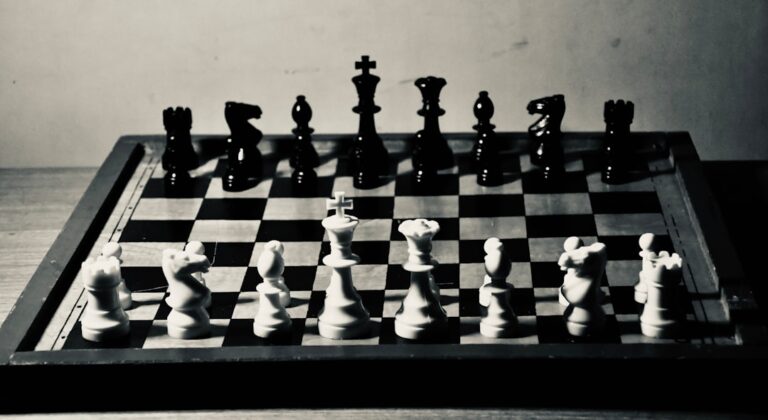
I used to stare at my to-do list and just… freeze.
The sheer number of tasks felt like a tidal wave threatening to pull me under. With so much to do, where do you even begin? It’s a paralyzing feeling, and it often led me right back to the very habits I was trying to escape—laziness, procrastination, and feeling completely stuck. I know that feeling of being overwhelmed all too well.
But I learned that taking back control isn't about finding more hours in the day. It’s about learning to focus on what truly matters. It’s about being intentional. Over the years, I’ve tried countless methods to get my priorities straight, and I want to share the ones that actually work. These aren't magic tricks, but they are practical tools that helped me build a productive life from the ground up.
First, Find Your “Why”
Before we dive into any techniques, we need to talk about the foundation. You can’t prioritize tasks if you don’t know what you’re prioritizing for. What’s the big picture? For me, this became crystal clear as I worked on strengthening my Christian Orthodox faith. My ultimate priority is my relationship with God. Every other goal—my health, my work, my relationships—flows from that.
When I see my tasks through that lens, prioritization becomes simpler. I ask myself: "Does this task help me become a better person? Does it serve others? Does it align with the purpose I feel God has for me?" This isn't about being perfect. It's about having a compass. When you know your true north, it's much easier to decide which paths to take and which to ignore.
So, before you make your next to-do list, take a moment. What’s your ultimate goal? What kind of life are you trying to build? Knowing that makes all the difference.
15 Practical Ways to Prioritize Your Tasks
Okay, once you have your "why," it's time for the "how." Here are 15 different techniques. Don’t try to use them all at once. Pick one or two that feel right for you and give them a try.
-
The Eisenhower Matrix. This sounds complicated, but it's simple. Divide your tasks into four boxes: Urgent and Important (Do it now), Important but Not Urgent (Schedule it), Urgent but Not Important (Delegate it if you can), and Neither (Delete it). This helps you see what really needs your attention.
-
Eat That Frog. This one is a game-changer. The "frog" is your biggest, most important, and often most dreaded task of the day. Do it first thing in the morning. When I was battling bad habits, my "frog" was often the healthy choice—like going for a walk instead of booting up a video game. Getting it done first sets a productive tone for the entire day.
-
The 80/20 Rule (Pareto Principle). This rule suggests that 80% of your results come from just 20% of your efforts. Identify that critical 20%. What are the few tasks that will give you the biggest reward? Focus your energy there.
-
The ABCDE Method. Go through your list and label each task with a letter. A is for your most critical tasks. B is for important tasks. C is for tasks that are nice to do. D is for tasks you can delegate. E is for tasks you can eliminate. Never work on a B task until all your A tasks are done.
-
Time Blocking. Instead of a to-do list, use a calendar. Block out specific times for specific tasks. This is how I manage my deep work. I block out 2–4 hours of focused time for my most important work. It prevents distractions and ensures my priorities get the time they deserve.
-
Task Batching. Group similar small tasks together. Instead of answering emails as they come in, set aside two 20-minute blocks a day to handle all of them at once. Do all your errands in one trip. This saves mental energy.
-
The 2-Minute Rule. If a task takes less than two minutes to complete, do it immediately. Replying to a quick text, putting a dish in the dishwasher, or taking out the trash. Getting these little things done prevents them from piling up.
-
Value vs. Effort. Quickly score your tasks. How much value will this create? How much effort will it take? Focus on high-value, low-effort tasks first. Then tackle the high-value, high-effort ones.
-
Single-Tasking. The opposite of multitasking. Pick one thing and give it your full attention until it's done. You’ll do it faster and better. Multitasking is a myth that just divides your focus and lowers the quality of your work.
-
Set a Weekly Review. Every Sunday, I take 30 minutes to look at the week ahead. What are my main goals? What appointments do I have? This simple habit helps me start Monday with a clear plan instead of feeling reactive.
-
Learn to Say No. You can't do everything. Saying no to things that don’t align with your priorities is one of the most powerful productivity tools there is. It's not about being selfish; it's about protecting your energy for what truly matters.
-
Manage Your Energy, Not Just Your Time. Pay attention to your natural energy levels. Are you sharpest in the morning? Schedule your "frog" for then. Do you get a creative burst in the afternoon? Save that time for brainstorming. Work with your body, not against it.
-
Break It Down. A huge project can feel impossible. "Get healthy" is overwhelming. But "go for a 15-minute walk today" is doable. Break your big goals into tiny, actionable steps.
-
Delegate or Automate. You don't have to be the hero who does everything. Is there something someone else can do? Can you set up automatic bill payments? Free up your plate so you can focus on your unique contributions.
-
Celebrate Small Wins. This was vital when I was losing over 110 pounds. I didn't focus on the total number. I focused on winning the day. I celebrated making one healthy meal, doing one workout, or drinking enough water. These small victories build momentum. They prove to you that you can do it. Prioritizing isn't just about the big stuff; it's about building a chain of small, consistent successes.
Your First Step
Looking at this list might feel overwhelming in itself, and that’s okay. Remember, the goal isn't perfection. The goal is progress. You don’t need a complex system. You just need to start.
It all comes down to making a conscious choice. You're choosing what deserves your limited time and energy. It's a skill that gets stronger with practice, just like a muscle.
So, here's my challenge to you: don't try to change everything at once. Just look at your day tomorrow. What is the one single task—your "frog"—that will make the biggest positive difference?
What’s the one thing you can prioritize tomorrow to move you closer to the life you truly want to live?





